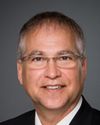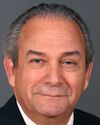Thanks, Chair.
I'd just like to get your opinion on something Mr. Dewar raised, actually, because I think it had some relevancy, obviously, to the discussion here about trying to enfranchise rather than disenfranchise voters, and that's enumeration.
One of our previous witnesses was Mr. Jean Ouellet, who is the chief electoral officer for Saskatchewan. I'm fairly familiar with the enumeration process in Saskatchewan, and it's not the best. I asked him the question, because we had in previous provincial elections seen examples of when literally dozens of households in city areas in certain ridings were excluded. They were not enumerated. I'd seen that time after time after time in provincial elections.
In discussions with the electoral office, I asked why this was. Did they not have the manpower to go out and enumerate, or was it sloppy work or whatever? They pointed out that in certain areas of a city, where perhaps the crime rate is fairly high, people just do not answer their doors. They gave me examples. The previous chief electoral officer, a woman by the name of Jan Baker, recounted the story to me of going out personally with the enumerators to ensure that they were doing their jobs correctly. She would see people through their windows in their houses. And they would ring the doorbell and knock on the door, and the people wouldn't answer. Perhaps because they were afraid, or for whatever reason, they just didn't answer the door. She said that this is why enumeration is so flawed.
I'm not suggesting that the permanent voters list is a perfect fix, but I also don't think that enumeration is a perfect fix. It may have to be some sort of hybrid. I don't know. But I'd like to get your opinion on the permanent voters list versus enumeration.




